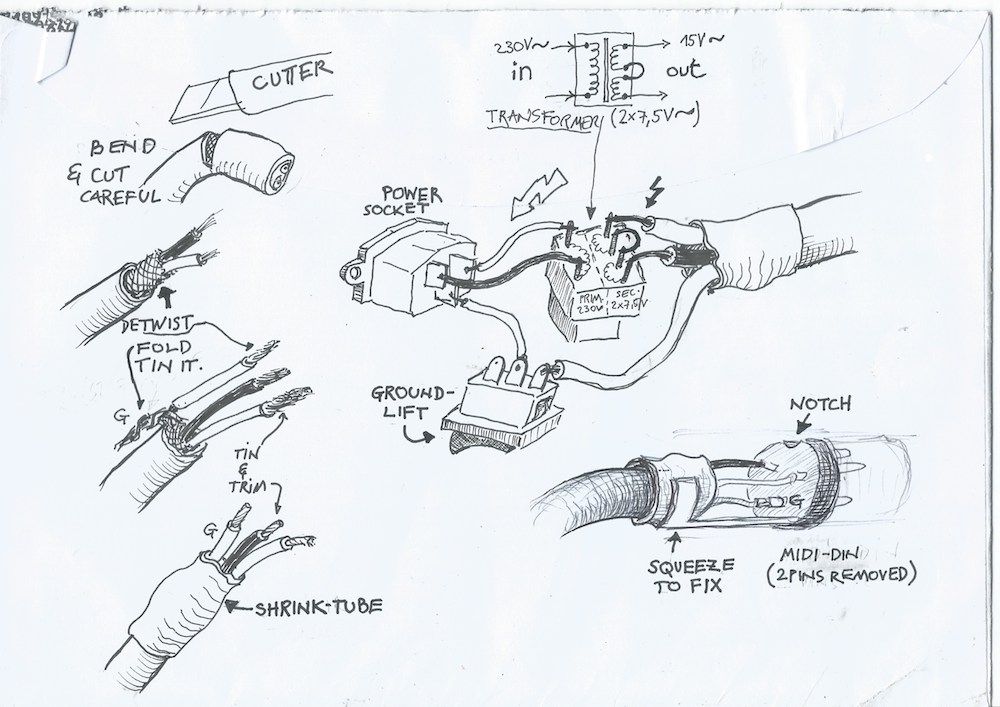the discussions here: is there a better power supply for an etherwave? and: etherwave maximum input voltage gave me the impulse to build one with ground-lift switch. swiss power units are not grounded, so playing through a ungrounded amp, or just with headphones is not possible. i finally clutched all parts together and set the theremin with the new power unit to a small battery amp. (what's more ungrounded than that?) with lifted ground it's useless. but as soon as the ground is switched on, it works perfectly. jippy! and if i should get a groundloop, i'll still have a switch!
i used a new transformer, output with two coils in series, notice the small bridge. output is 15V 300mA. that was the closest one i could get. the etherwave internal voltage regulators don't get hot, so i think it's fine. but i thought about replacing the bridge with a resistor to reduce the voltage towards 14v.

